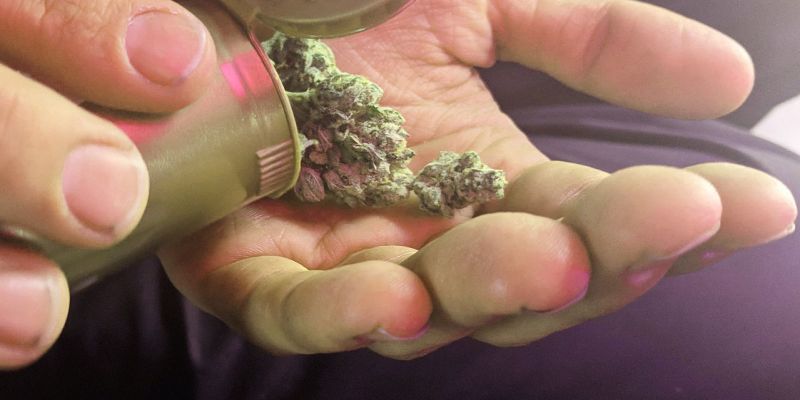
Cannabis 101: The User-Friendly Guide to Cannabis Products
By Courtney Beaupre
From Issue 57: Spring 2023
Many Gardiner residents are eagerly awaiting the opening of a legal cannabis dispensary in town, but progress feels slow, doesn’t it? In the meantime, residents have been asking questions about cannabis, which prompted the writing of this article. That fact alone shows that the culture and stigma around cannabis use is changing and cannabis (Marijuana, Mary Jane, the Sticky Icky) is becoming more accessible and acceptable. In March 2021, New York State became the 17th state to legalize recreational cannabis. So, whether you are a cannabis connoisseur or just canna-curious, here is a basic 101 on cannabis.
Cannabinoids
The cannabis plant contains over 100 various cannabinoids, THC and CBD being the most well-known. Cannabinoids are compounds that interact with our bodies to create a variety of effects such as appetite stimulation, lessening of nausea, and reducing inflammation. Cannabinoids are created in the resin glands of the cannabis plant, but they aren’t just found in plants; our bodies also naturally produce cannabinoids. In fact, we have an endocannabinoid system (ECS) which is believed to play a key role in the regulation of sleep, appetite, mood, and other biological functions. Although our bodies produce cannabinoids, they don’t act the same as plant cannabinoids. For example, we don’t get “high” from our ECS functions.
CBD vs. THC
Cannabidiol (CBD) is a natural compound found in both marijuana and hemp plants. It is considered the cousin to THC but does not contain the same intoxicating components; it will not ever get you “high.” There are a variety of CBD products which offer either “full spectrum”, “broad spectrum” or “isolate forms”. Full spectrum refers to the whole plant that contains flowers, CBD, various other minor cannabinoids and 0.3% or less of THC. Broad spectrum products contain CBD and other minor cannabinoids but do not contain THC and thus should not show up on a drug test. Isolates, as the name suggests, only contain Cannabidiol (CBD) itself, with all other compounds removed during the extraction process, and again, will not show up on a drug test. Isolates do not offer the potential synergistic effect that may occur when CBD is coupled with other cannabinoids and terpenes.
Tetrahydrocannabinol (THC) is the active ingredient in marijuana that gives users the euphoric feeling of being “high”. THC also contains many of the same properties as CBD. For example, both THC and CBD are known for their analgesic, anti-inflammatory, and antioxidant properties. THC is also known to protect nerve cells from damage, prevent vomiting, reduce involuntary muscle twitching, and act as a bronchodilator. THC is often used in the treatment of pain, nausea, insomnia, convulsions, stress, and anxiety.
THC Cannabis Strains
There are 3 main strains of cannabis: Indica, Sativa and Hybrid with various properties. Indica, also known as “In Da Couch”, is associated with relaxing and potentially sedative effects. Sativa is more broadly known for its uplifting or energizing properties. However, effects are not necessarily indicative of everyone’s experience. It’s important to remember everyone’s body reacts differently when consuming cannabis (THC) which can create a dramatically different experience than what your friend experiences using the same product. Hybrids are a mixture of both strains, some having more sativa or indica dominant qualities. “Terpenes” are the aromatic compounds found in plants and fruits such as lavender, pine, lemon, or orange. These terpenes give each strain of cannabis a different aromatic profile and composition and have names such as Sour Diesel or Strawberry Lemonade.
If you have never consumed THC or CBD but are interested in exploring, speak with your healthcare provider, and stay tuned for future installments of this Cannabis 101 covering various CBD/THC products and New York State legal guidelines for usage.
